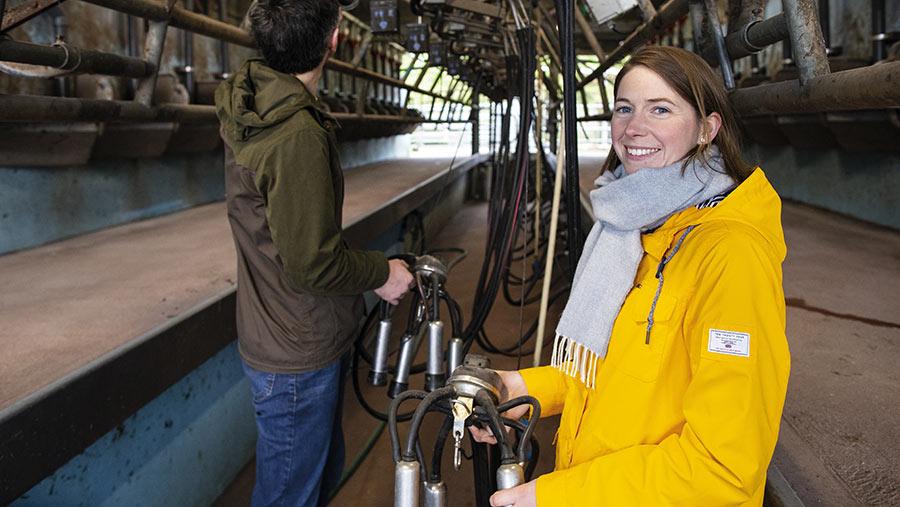Farmer Focus: High-margin Breton milk is food for thought
 © Cathal Noonan
© Cathal Noonan A recent farm trip to Finistère in Brittany with my discussion group was not only a great reason to get together, but also turned out to be an invaluable learning opportunity.
When visiting traditional French farms in the past, maize silage, robots and all-year-round-milking have been common trends – but not this time.
See also: Farmer Focus: Attitudes to once-a-day milking are changing
Finistère has a climate similar to Ireland, with annual rainfall around 900–1,300mm. This has resulted in ideal grass-growing conditions and a niche group of farmers who take full advantage of the situation.
All four farms we visited were organic, 100% grass-based and milking once a day (OAD).
While we learned a multitude of lessons, it was the people we met that made a lasting impression.
Erwan LeRoux, an agricultural adviser and researcher-turned-dairy farmer, was one of those individuals.
He began dairying 21 years ago with a few core principles around which he wished to develop his farm system.
The original herd when the farm was purchased consisted of Holstein-Friesian cows, milking all year round and producing 11,500 litres, half of which was produced from maize with 1.7t concentrate.
What’s the problem, you might ask?
Erwan’s core principles were about cost of production and workload-to-profit ratio.
He also wanted a return on investment and to reduce the environmental footprint on the natural resources of the farm.
When he applied these objectives to the original herd purchased, he decided to change over to a spring calving system, milking cross-bred cows OAD on a full grass diet with no concentrate.
This system delivered in terms of workload and resilience. It focuses on low-volume, high-margin milk that is consistently profitable despite market fluctuations in milk price and farm inputs.
Erwan’s “nurse” cows were a novel idea for me – these cows reared his replacement heifers from birth to November dry-off, when they reached eight months of age.
This produced healthy, strong, rapidly growing heifer calves while removing a considerable degree of labour.
There were no reported issues of suckling other cows once they rejoined the milking herd as first-lactation cows.
It was great to hear from an individual with such a broad and considered view of dairying.
We left with plenty of food for thought and a renewed motivation to view our own farm systems from a new perspective.

